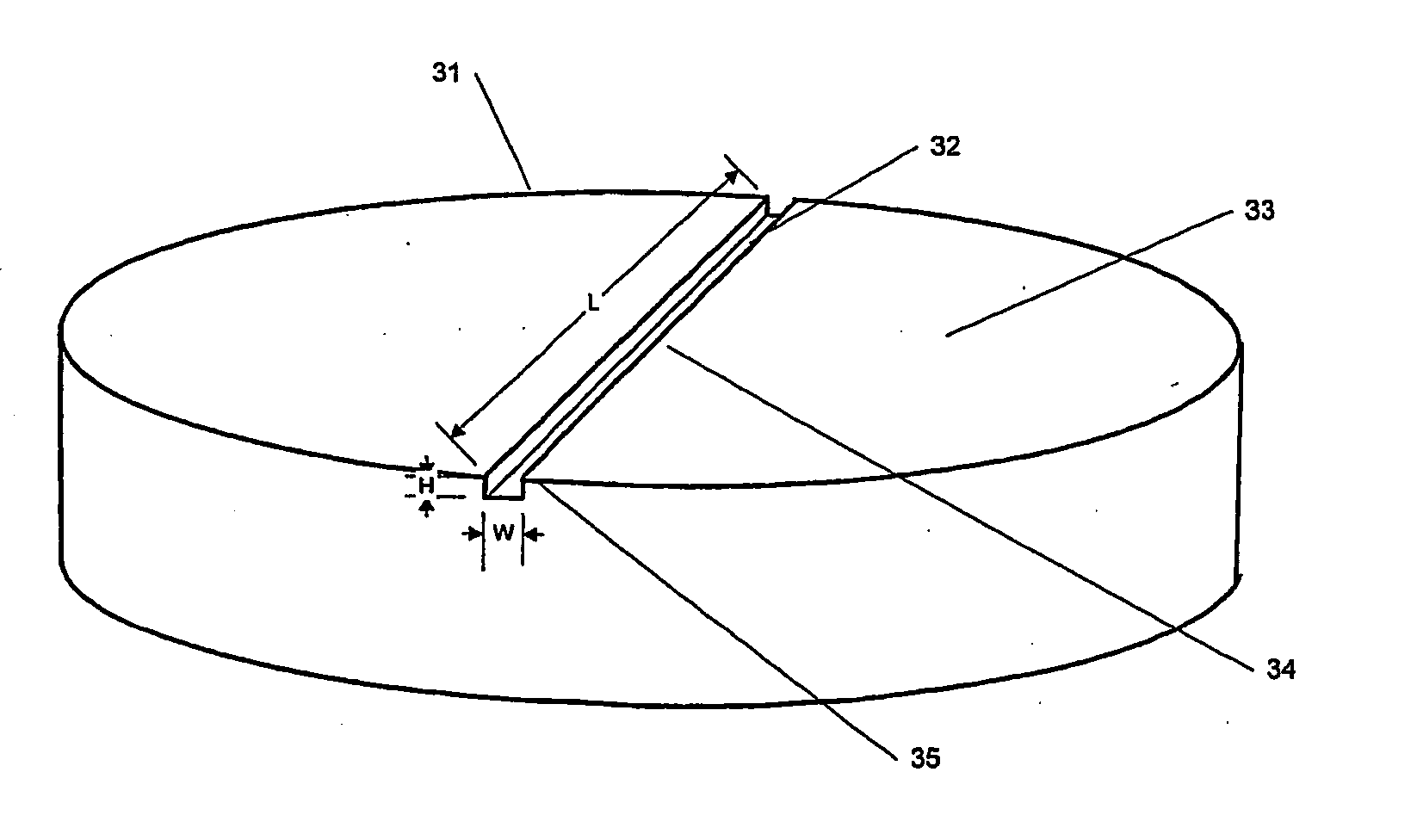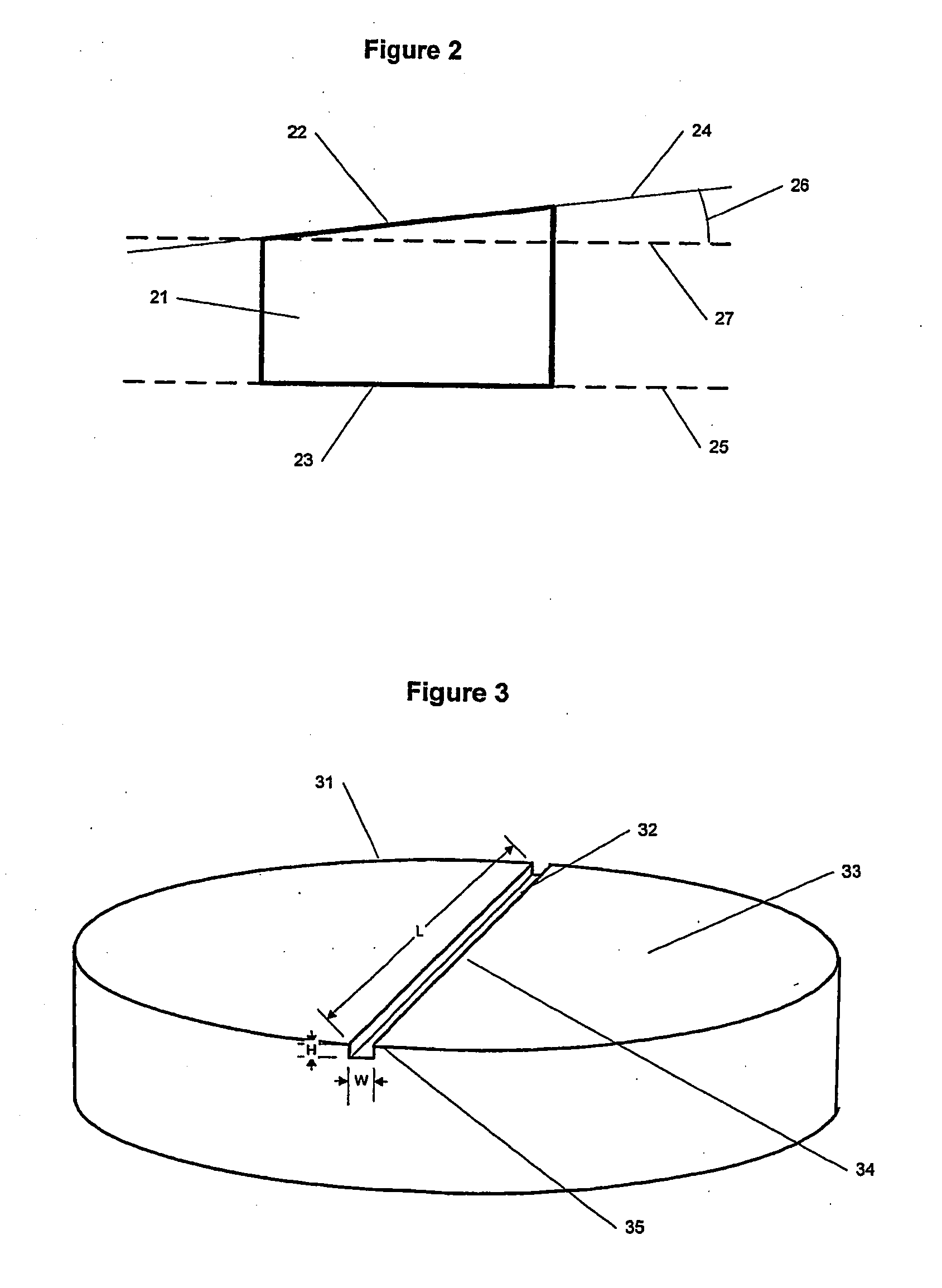Spinal implants
a technology for spinal implants and implants, which is applied in the field of spinal implants, can solve the problems of herniation, shrinkage or displacement of the disc, and present risks to the patient, and achieve the effects of improving handling, enhancing bone growth, and increasing structural stability
- Summary
- Abstract
- Description
- Claims
- Application Information
AI Technical Summary
Benefits of technology
Problems solved by technology
Method used
Image
Examples
example 1
An implant is made by cutting an approximately 12 mm transverse segment from the fibula of a human cadaver to form an implant body. The body is substantially disk shaped, forming a ring having a diameter of approximately 12 mm. The top and bottom surfaces of the body are textured, to form concentric rings, using a concentric-arc ridge cutter. The edges of the body are then filed to form a bevel around the entire circumference of the segment.
The implant is then suspended in a vessel and immersed in 1.0 N HCl, at a ratio of 100 ml HCl per gram of bone. The acid is stirred, and maintained at ambient temperature (approximately 21° C.) for approximately two hours. The depth of demineralization is measured and determined to be approximately 1 mm. The implant is washed in buffered saline. The washing step is repeated three times, and the implant is then soaked in buffered saline for about 10 minutes. The implant is freeze dried and stored in a sterile container.
The implant is then sur...
example 2
An implant is made by cutting an approximately 20 mm transverse segment from the femur of a human cadaver to form an implant body. The body is substantially disk-shaped, forming a ring having a diameter of approximately 25 mm. The top and bottom surfaces of the body are textures, to form concentric rings, using a concentric-arc ridge cutter. Six radial channels, approximately 0.5 mm wide and approximately 0.8 mm deep are cut into the top and bottom surfaces of the implant using a saw. The edges of the body are filed to form a bevel around the entire circumference of the segment.
The implant is then suspended in a vessel and immersed in 1.0 N HCl, at a ratio of 100 ml HCl per gram of bone. The acid is stirred, and maintained at ambient temperature (approximately 21° C.) for approximately seven hours. The depth of demineralization is measured and determined to be approximately 2 mm. The implant is washed in buffered saline. The washing step is repeated three times, and the implant i...
example 3
An implant is made by cutting an approximately 24 mm transverse segment from the femur of a human cadaver to form an implant body. The body is substantially disk shaped, forming a ring having a diameter of approximately 25 mm. The edges of the body are filed to form a bevel around the entire circumference of the segment. The body is then cut in half, to form two half-ring implants.
The implants are then suspended in a vessel and immersed in 1.0 N HCl, at a ratio of 100 ml HCl per gram of bone. The acid is stirred, and maintained at ambient temperature (approximately 21° C.) for approximately seven hours. The depth of demineralization is measured and determined to be approximately 2 mm. The implants are washed in buffered saline. The washing step is repeated three times, and the implants are then soaked in buffered saline for about 10 minutes.
The top and bottom surfaces of the body are textured, to form concentric rings, using a concentric-arc ridge cutter. The implants are freez...
PUM
| Property | Measurement | Unit |
|---|---|---|
| depth | aaaaa | aaaaa |
| depth | aaaaa | aaaaa |
| diameter | aaaaa | aaaaa |
Abstract
Description
Claims
Application Information
 Login to View More
Login to View More - R&D
- Intellectual Property
- Life Sciences
- Materials
- Tech Scout
- Unparalleled Data Quality
- Higher Quality Content
- 60% Fewer Hallucinations
Browse by: Latest US Patents, China's latest patents, Technical Efficacy Thesaurus, Application Domain, Technology Topic, Popular Technical Reports.
© 2025 PatSnap. All rights reserved.Legal|Privacy policy|Modern Slavery Act Transparency Statement|Sitemap|About US| Contact US: help@patsnap.com



